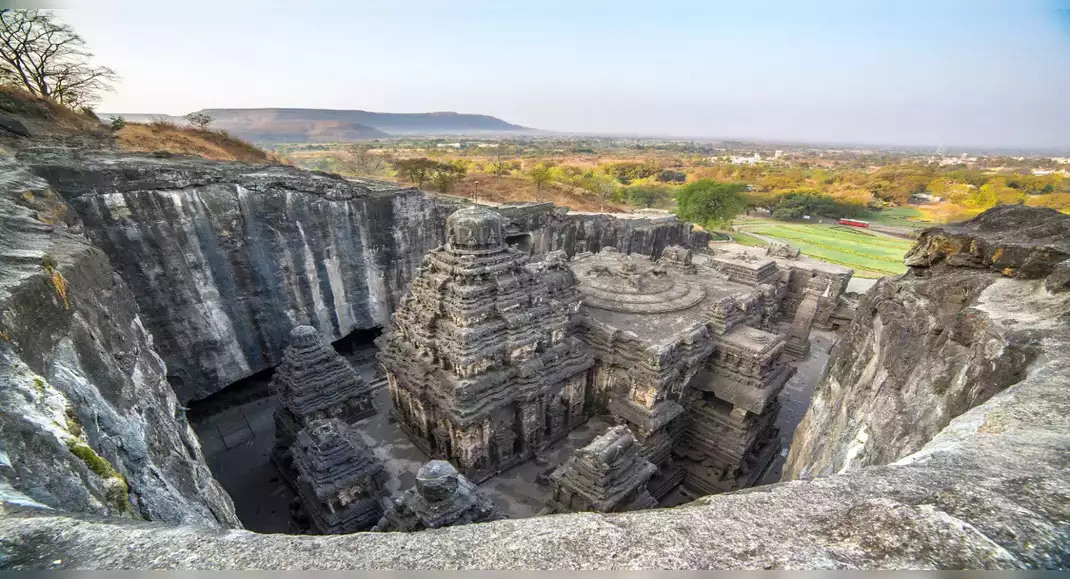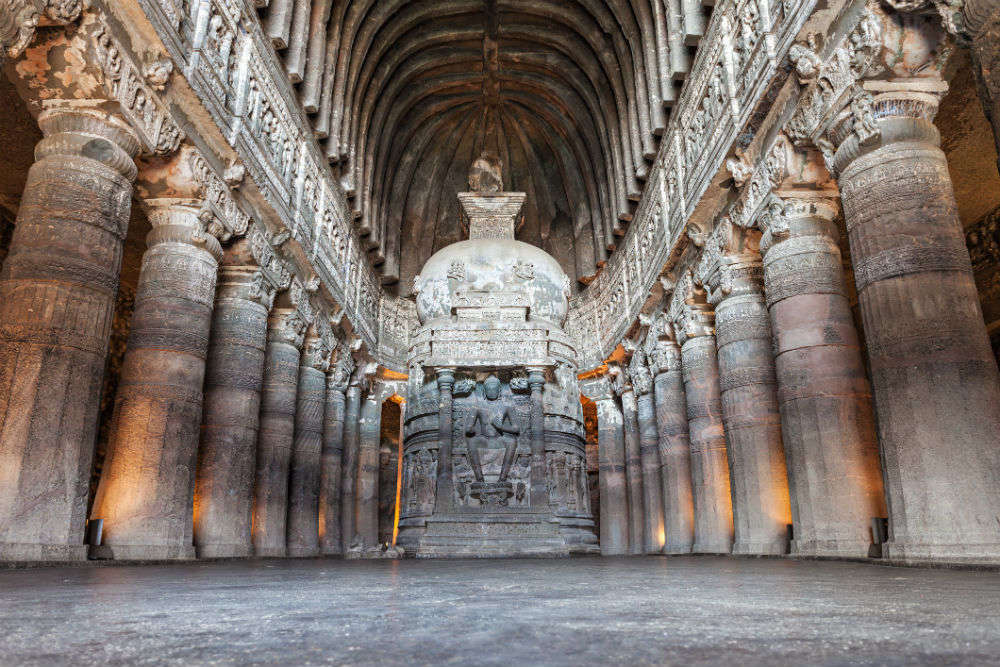

Ajanta & Ellora: A Complete Travel Guide to Maharashtra’s Ancient Caves
By JKV Travel
Step back in time and witness the marvels of human artistry and devotion etched in stone. The UNESCO World Heritage sites of Ajanta and Ellora, nestled in the heart of Maharashtra, stand as silent yet powerful testimonies to India's rich cultural and religious heritage. These ancient cave complexes, carved meticulously out of basalt cliffs, showcase intricate sculptures and vibrant murals spanning centuries, representing Buddhism, Hinduism, and Jainism. Whether you are a history buff, an art enthusiast, or simply a curious traveler, we invites you on an unforgettable journey through these awe-inspiring rock-cut wonders. Prepare to be captivated by the sheer scale, artistic brilliance, and spiritual significance of Ajanta and Ellora.
A Tale of Two Caves: Unveiling Their Unique Identities
While often mentioned together, Ajanta and Ellora possess distinct characteristics that contribute to their unique allure. Understanding these differences will enrich your appreciation of these magnificent sites:
Ajanta Caves: A Buddhist Masterpiece
Primarily Buddhist, the 30 rock-cut cave monuments at Ajanta date back from the 2nd century BCE to about 480 CE. Carved into a horseshoe-shaped cliff overlooking the Waghora River, these caves are renowned for their exquisite murals and sculptures depicting the life of Buddha, his previous incarnations (Jataka tales), and various Buddhist deities and narratives. The vibrant colors and intricate details of the paintings, executed in the tempera technique, offer a fascinating glimpse into the social, religious, and artistic life of ancient India. The caves were patronized by different rulers of the Vakataka dynasty.
- Key Highlights: Stunning murals, intricate sculptures, depictions of Jataka tales, Chaityagrihas (prayer halls with stupas), Viharas (monasteries).
- Focus: Primarily Buddhist art and architecture.
- Time Period: 2nd century BCE to about 480 CE.


Ellora Caves: A Harmony of Faiths
Located approximately 100 km from Ajanta, the 34 caves at Ellora represent a unique confluence of three major religions: Buddhism, Hinduism, and Jainism. Carved between the 6th and 10th centuries CE by different ruling dynasties (Kalachuris, Chalukyas, and Rashtrakutas), the Ellora caves showcase a remarkable religious tolerance and artistic diversity. The Buddhist caves (caves 1-12) feature serene sculptures of Buddha and Bodhisattvas. The Hindu caves (caves 13-29) are particularly impressive, with the monolithic Kailasa Temple (cave 16) being an architectural marvel carved out of a single rock. The Jain caves (caves 30-34) exhibit intricate carvings reflecting Jain philosophy and yakshas.
- Key Highlights: Monolithic Kailasa Temple (cave 16), diverse religious representations (Buddhism, Hinduism, Jainism), intricate sculptures, varying architectural styles.
- Focus: Religious harmony and artistic diversity.
- Time Period: 6th to 10th centuries CE.
Planning Your Journey Through Time with us:
Embarking on a journey to Ajanta and Ellora requires careful planning to fully appreciate their grandeur. We offers expertly crafted tours that ensure a seamless and enriching experience:
Getting There:
- By Air: The nearest airport is Aurangabad, which has good connectivity with major Indian cities. We can arrange airport transfers to your hotel.
- By Train: Aurangabad Railway Station is well-connected to major rail networks across India. We can organize pick-up and drop-off services.
- By Road: Aurangabad is accessible by well-maintained roads from major cities in Maharashtra and neighboring states. We provides comfortable private vehicles for your travel.
Best Time to Visit:
The ideal time to visit Ajanta and Ellora is during the winter months (October to March) when the weather is pleasant and conducive for exploration. The summer months (April to June) can be extremely hot, while the monsoon (July to September) brings heavy rainfall.
What to Expect:
- Extensive Walking: Be prepared for a significant amount of walking within the cave complexes. Wear comfortable shoes.
- Photography Restrictions: Photography is allowed in most caves, but flash photography is prohibited inside the Ajanta caves to protect the delicate murals. Tripods might require special permission.
- Guides: Hiring a government-approved guide is highly recommended to understand the history, art, and religious significance of the caves. We can arrange knowledgeable and multilingual guides for your tour.
- Time Allocation: Allocate at least one full day for each site to explore them adequately. Traveling between Ajanta and Ellora takes approximately 2-3 hours by road.
Unraveling the Mysteries: What Makes Them So Special?
The allure of Ajanta and Ellora lies not just in their age and artistic brilliance but also in the stories they tell:
- A Window to the Past: The murals and sculptures offer invaluable insights into the social, cultural, and religious life of ancient India. From royal processions to celestial beings, the artwork provides a vibrant tapestry of a bygone era.
- Architectural Marvels: The fact that these intricate structures were carved out of solid rock with rudimentary tools is a testament to the incredible skill and dedication of the artisans. The monolithic Kailasa Temple at Ellora is particularly awe-inspiring.
- Religious Harmony: Ellora stands as a unique example of different religions coexisting and contributing to a shared artistic landscape. The peaceful coexistence of Buddhist, Hindu, and Jain caves speaks volumes about the religious tolerance of the time.
- Artistic Excellence: The fluidity of the sculptures and the vibrant storytelling of the Ajanta murals are considered masterpieces of ancient Indian art, influencing artistic traditions for centuries.
Experience the Timeless Grandeur with us
A visit to Ajanta and Ellora is more than just sightseeing; it's an immersive journey through time, art, and spirituality. Let JKV Travel be your trusted companion in unlocking the secrets of these ancient wonders. We provide comfortable and reliable transportation, handpicked accommodations in Aurangabad, knowledgeable guides, and meticulously planned itineraries tailored to your interests. Allow us to handle the logistics while you lose yourself in the captivating beauty and historical significance of Ajanta and Ellora. Contact us today to embark on this unforgettable cultural pilgrimage and witness the enduring legacy of India's ancient past.





 More
More





